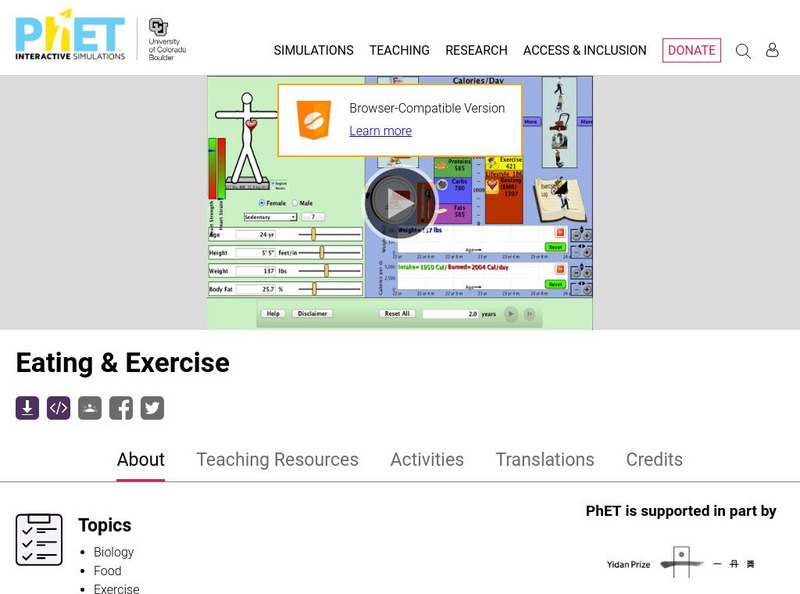Hi, what do you want to do?
American Museum of Natural History
What Do You Know About PaleontOLogy?
Believe it or not, some dinosaurs are not extinct. Discover this and other interesting facts about dinosaurs in a 10-question online quiz. As individuals answer questions, the resource provides them with feedback and additional facts...
Curated OER
Seaworthy Presentations
First graders research ocean animals and plants on the web. In this ocean habitat lesson, 1st graders prepare a multimedia presentation. Students will work on their presentations in pairs and every group should have its own...
Curated OER
Seashell Homes
Pupils listen to a story about seashells. They discuss shelled animals. Learners describe the function of seashell. Pupils relate the function of a seashell to their own dwelling. They differentiate between shelled animals that make...
Curated OER
Owl Pellets
Sixth graders investigate the role of owls in their ecosystem. In this food chain lesson, 6th graders illustrate an owl food chain, dissect an owl pellet, and analyze data. Students discuss what would happen to owls if there were an...
Curated OER
I Wear My Genes Inside Out: The Genetic Characteristics of Animals
Students create mixed breed dogs using paper illustrations of various breeds. They label dogs created by students using the Genetics Center and discuss the aspects of genetics that affect the outcome of the various projects.
Curated OER
The World of Insects and Spiders
Students identify numerous insects and their body parts. In this insect life instructional activity, students practice using scientific vocabulary while comparing the different parts of spiders and insects. Students view...
Curated OER
How Close Can You Get? Estimating
Young scholars work collaboratively to determine how many crackers are in a large container. They then view a video to see how often people use estimation in their jobs, and another video to watch students work on figuring out...
Curated OER
Disease and Nutrition
Students study disease and explore how it can be avoided or treated with simple solutions. In this investigative lesson students create a food chart for two weeks for themselves to track and be sure they are getting all the...
Curated OER
Beautiful Birds
Students engage in a lesson that is about birds while taking part in a variety of activities that are like the following. They play a game that is used for increasing memory while using bird pictures. Students also create a collage with...
Curated OER
Beautiful Birds
Students explore the traits of birds to uncover information about their eggs, feathers, beaks and other characteristics. The data is probed through a variety of exploration centers.
Curated OER
Easter Word Search
In this Religion worksheet, students read an article about Easter and answer 19 questions that follow. They identify statements according to the article whether true and false. Students also complete sentences using the vocabulary terms...
Curated OER
American Robin: A Robin's Menu Through the Seasons
Young scholars read the article, A Robin's Menu Through the Seasons, taking notes and underlining key words and phrases. They create a math grid from the reading, research the animals in the article, and develop various writing assignments.
Curated OER
Those Amazing Seaworld Animals
Students research the animals at SeaWorld and then relate the info they have found into various types of graphs; line, circle and bar. This lesson combines math and science nicely. They access a website imbedded in this plan to do their...
Curated OER
Tooth Detectives: Determining the Diets of Extinct Animals
Students study the teeth of living mammals and apply those skills to the interpretation of the diet of extinct animals.
Curated OER
Animals: Bobcats
Learners examine the bobcat and its habitat. They color pages and examine photographs and fact sheets to explore the bobcat.
Curated OER
Identifying Dinosaurs
Students investigate basic information about dinosaurs. They listen to the book, "My Visit To the Dinosaurs," explore various websites, take an online quiz, and play an online dinosaur game.
Curated OER
Wildlife on the African Savanna
Second graders discuss African Savanna, choose and illustrate example of wildlife that is found in the Savanna, and write paragraph describing wildlife they chose to draw.
Curated OER
Observing Brine Shrimp
Learners observe brine shrimp eggs, create an appropriate environment for their survival, and observe their growth.
Curated OER
Quiz
In this quiz worksheet, students, after researching and discussing different types of world-wide animals, determine the answers to ten key true and false questions.
Curated OER
Wildlife on the African Savanna
Students illustrate an example of wildlife that is found in the African Savanna. Students write a paragraph describing the wildlife they chose to draw. 2. Students will write a paragraph describing the wildlife they chose to draw.
University of Colorado
University of Colorado: Ph Et Interactive Simulations: Eating and Exercise
Interactive animated simulation allows students to make connections between the real world and the physical world. Uses interactive tools to explore issues such as calories, exercise, diet, fitness, and weight control.
Regents of the University of Michigan
Animal Diversity Web: American Bison
Comprehensive reference material on the American bison: its habitat, physical features, eating habits, reproduction, behavior, communication, roles in a prairie ecosystem, and interactions with humans.
Regents of the University of Michigan
Animal Diversity Web: Ray Finned Fish
Comprehensive reference material on ray-finned fishes, with information on their habitat, evolution, physical features, eating habits, reproduction, behavior, how they communicate, role in the ecosystem, and threats to their continuing...
E-learning for Kids
E Learning for Kids: Science: Christmas Island: What Do Animals Eat?
This lesson teaches students the three different types of diets animals may have - herbivore, carnivore, and omnivore.




























